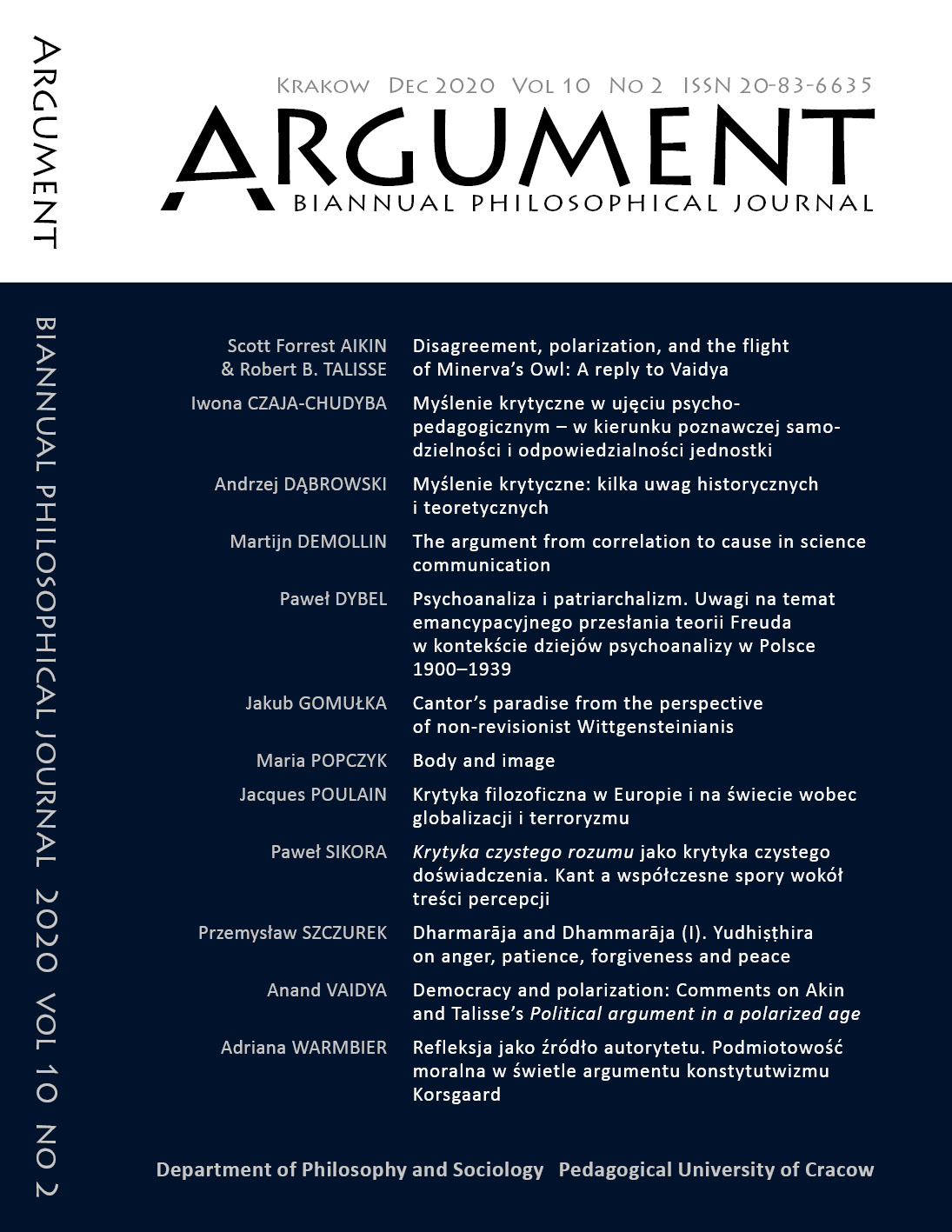Body and image
DOI:
https://doi.org/10.24917/20841043.10.2.9Słowa kluczowe:
visual culture, body, image, icon, incarnation, anthropologyAbstrakt
In aesthetics, as a philosophy of art, the body of the viewer is juxtaposed with the image of the painting, before which it stands still; both body and image are considered to be independent, which is a condition of a full aesthetic experience. In the present article I demonstrate how, through phenomenology, pragmatism and the idea of incarnation, post‐Kantian aesthetic is broadened. I limit myself to three theoretical perspectives; in each of them the duality of body and image is neutralised according to different rules. Phenomenology develops the relations between consciousness and body, while in pragmatism the encounter of body and image takes place in the process of the performative creation of image. The idea of incarnation, on the other hand, develops both of these currents in two divergent approaches: a theological and an anthropological one. Bringing together perspectives, which are so different methodologically reveals the existence of a profound tie between body and image.


